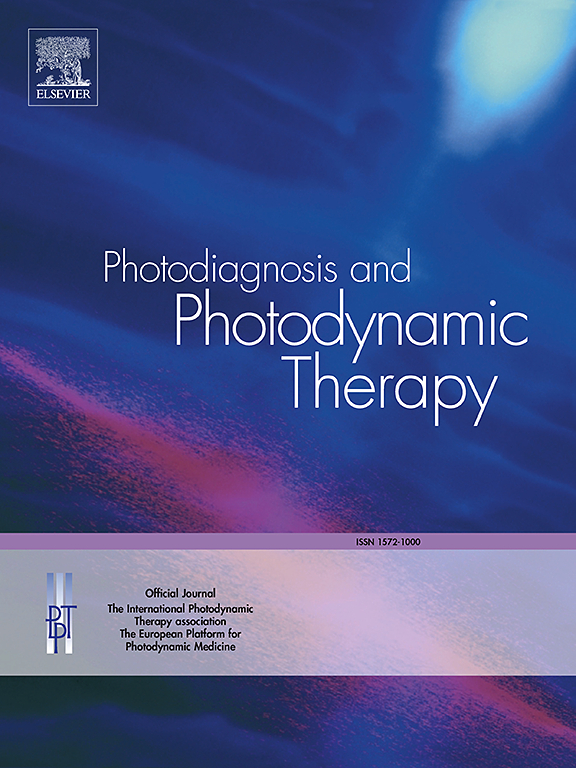近视屈光手术候选者的屈光不正、轴向长度和轴向长度-角膜曲率比与眼前节生物测量的差异相关性。
IF 3.1
3区 医学
Q2 ONCOLOGY
引用次数: 0
摘要
目的:研究近视屈光手术候选者的球面等值(SE)、轴向长度(AL)、AL 与角膜曲率半径比(AL/CR)与眼前节生物测量的相关性:回顾性收集了 2,478 名近视屈光手术候选者通过 Pentacam 测量的前段生物测量数据。前段生物测量包括角膜前曲率 (ACC)、角膜后曲率 (PCC)、角膜白对白直径 (WTW)、角膜中央厚度 (CCT)、3 毫米处角膜体积 (CV)、角膜前散光 (ACA)、角膜后散光 (ACA)、角膜后散光(PCA)、角膜前偏心率(ACE)、角膜后偏心率(PCE)、角膜前非球面度(ACAP)、角膜后非球面度(PCAP)、前房深度(ACD)和前房容积(ACV)。根据AL将眼睛分为四组:第一组,AL≤24mm;第二组,24mm结果:在所有 AL 组中,ACC 与 SE 呈正相关(r = 0.446 至 0.620),与 AL/CR 呈负相关(r = -0.704 至 -0.894),而 PCC 与 SE 呈正相关(r = 0.394 至 0.612),与 AL/CR 呈负相关(r = -0.606 至 -0.787)。在各组中,WTW 与 SE 呈正相关(r = 0.304 至 0.474),而在第 1 组和第 4 组中,WTW 与 AL/CR 呈负相关(r = -0.405 和 -0.412)。第 4 组中,ACA 与 AL(r = 0.310)和 AL/CR (r = -0.333)呈正相关。 第 4 组中,ACD 与 AL(r = -0.304)呈负相关,第 2 组中,ACD 与 AL/CR (r = -0.325)呈正相关。在第 4 组中,ACV 与 SE 呈正相关(r = 0.344),在第 2 组中,ACV 与 AL 呈正相关(r = 0.303)。各组的 CCT、CV、PCA、ACE、PCE、ACAP 和 PCAP 与 SE、AL 或 AL/CR 均无明显相关性:结论:观察到眼前节生物测量指标与SE、AL和AL/CR之间存在不同的相关性,这表明各种近视指标对眼部结构有不同的影响。这些发现可能有助于确定屈光手术的目标眼部结构。本文章由计算机程序翻译,如有差异,请以英文原文为准。
Differential correlations of refractive error, axial length, and axial length-to-corneal curvature ratio with anterior segment biometrics in myopic refractive surgery candidates
Purpose
To investigate the correlations of spherical equivalent (SE), axial length (AL), and AL to corneal curvature radius ratio (AL/CR) with anterior segment biometrics in candidates for myopic refractive surgery.
Methods
Anterior segment biometrics of 2,478 myopic refractive surgery candidates measured by Pentacam were collected retrospectively. The anterior segment biometrics included anterior corneal curvature (ACC), posterior corneal curvature (PCC), white-to-white corneal diameter (WTW), central corneal thickness (CCT), corneal volume at 3 mm (CV), anterior corneal astigmatism (ACA), posterior corneal astigmatism (PCA), anterior corneal eccentricity (ACE), posterior corneal eccentricity (PCE), anterior corneal asphericity (ACAP), posterior corneal asphericity (PCAP), anterior chamber depth (ACD), and anterior chamber volume (ACV). The eyes were divided into four groups according to the AL: group 1, AL≤24 mm; group 2, 24mm<AL≤26 mm; group 3, 26mm<AL≤28 mm; group 4, AL≥28mm. The correlations between these biometrics with SE, AL, and AL/CR were assessed by Pearson or Spearman correlation tests. A correlation with a coefficient ≥0.3 and a p value <0.05 were considered significant.
Results
In all AL groups, ACC was positively correlated with SE (r = 0.446 to 0.620) and negatively correlated with AL/CR (r = -0.704 to -0.894), whereas PCC was positively correlated with SE (r = 0.394 to 0.612) and negatively correlated with AL/CR (r = -0.606 to -0.787). WTW was positively correlated with SE (r = 0.304 to 0.474) in every group, and negatively correlated with AL/CR (r = -0.405 and -0.412) in group 1 and 4. ACA was positively correlated with AL (r = 0.310) and AL/CR (r = -0.333) in group 4. ACD was negatively correlated with AL (r = -0.304) in group 4, and positively correlated with AL/CR (r = -0.325) in group 2. ACV was positively correlated with SE (r = 0.344) in group 4, and positively correlated with AL (r = 0.303) in group 2. CCT, CV, PCA, ACE, PCE, ACAP, and PCAP was not significantly correlated with SE, AL, or AL/CR in any of group.
Conclusions
Differential correlations were observed between anterior segment biometrics and SE, AL, and AL/CR, suggesting that various myopia indicators have different effects on ocular structures. These findings may help identify the ocular structures that can be targeted of refractive surgery.
求助全文
通过发布文献求助,成功后即可免费获取论文全文。
去求助
来源期刊

Photodiagnosis and Photodynamic Therapy
ONCOLOGY-
CiteScore
5.80
自引率
24.20%
发文量
509
审稿时长
50 days
期刊介绍:
Photodiagnosis and Photodynamic Therapy is an international journal for the dissemination of scientific knowledge and clinical developments of Photodiagnosis and Photodynamic Therapy in all medical specialties. The journal publishes original articles, review articles, case presentations, "how-to-do-it" articles, Letters to the Editor, short communications and relevant images with short descriptions. All submitted material is subject to a strict peer-review process.
 求助内容:
求助内容: 应助结果提醒方式:
应助结果提醒方式:


